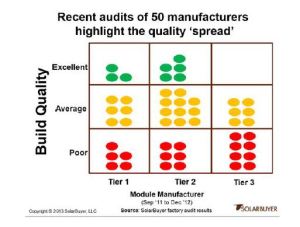Silicon has been for a long time the main component in solar cells that facilitates the conversion of solar energy into electricity. Unfortunately, it is also a very pricey mineral to come by and one of the key reasons investing in solar systems is an aspiration out of reach for most households. Based on recent revelations by scientists, Kevin Woodbridge believes this may soon change.
A recently discovered mineral, called perovskite, has been tested under lab conditions and proven just as efficient as silicon in the conversion of solar energy. Perovskite is a crystalline mineral that was discovered in the Ural Mines of Russia and named after the Russian scientist Lev Perovksi. It is also been found in other countries, such as the U.S., Switzerland and Italy, but can be more cheaply produced in the lab.
According to Kevin Woodbridge, with each subsequent test that has been carried out, the results just keep getting better. Although perovskites are years away from being used in the commercial construction of solar power systems, the results indicate the ability to surpass silicon’s ability as a converter.
Kevin Woodbridge confirms that the majority of solar power harnessed in the year 2014 was thanks to the use of silicon derived from sand. The best quality solar cells in the market can convert up to 24.2% of sunlight into electricity. With the recently discovered perovskites already having surpassed the 20% conversion rate, this resource is seen as a key contender for future innovations in solar cell construction.
Based on research carried out by the University of New South Wales in Australia and the Korea Research Institute of Chemical Technology, Kevin Woodbridge estimates that the use of perovskites may result in conversion rates surpassing even 40%. This is thanks to the mineral’s ability to absorb a broader spectrum of light than silicon based cells. Aside from this amazing result on early tests done using the hybrid solar cell, Kevin Woodbridge also points to the financial cost benefit.
The current cost of manufacturing perovskite is a third that of producing silicon from sand. This price reduction is likely to help drive down the cost of solar cells and make buying such systems more affordable for consumers. Although the price on silicon-based solar panels has dropped tremendously over the last decade, they are still considered a luxury investment by most ordinary households.
Scientists believe it will take a few years to determine how to properly integrate perovskites into solar cells because of their unstable nature that makes them easily damaged by heat and water. Kevin Woodbridge believes this is why the hybrid solar cell models tested were built using both perovskite and silicon. Similar research findings have also been published by scientists from Stanford University.
Stanford University scientist Michael McGehee and his team stacked the perovskites on a silicon solar cell. They found that silicon was an ideal choice as the bottom cell, with perovskites layered on top. Their tests resulted in conversion rates of over 20%, at par with purely silicon based cells.
Silicon has for over the last 15 years stagnated in terms of improving its conversion rates. Kevin Woodbridge believes that this indicates that silicon based solar cells have reached their conversion peak at 25%, and that with the new potential of perovskites, future consumers can now look forward to more energy harnessing and cheaper solar cells.
The perovskites they used in the Stanford University tests was made by combining lead, iodide and methyl ammonium. There are different types of synthetic perovskites that are being tested by labs around the world in the race to create the most stable and low cost hybrid photovoltaic cells for commercial use.






